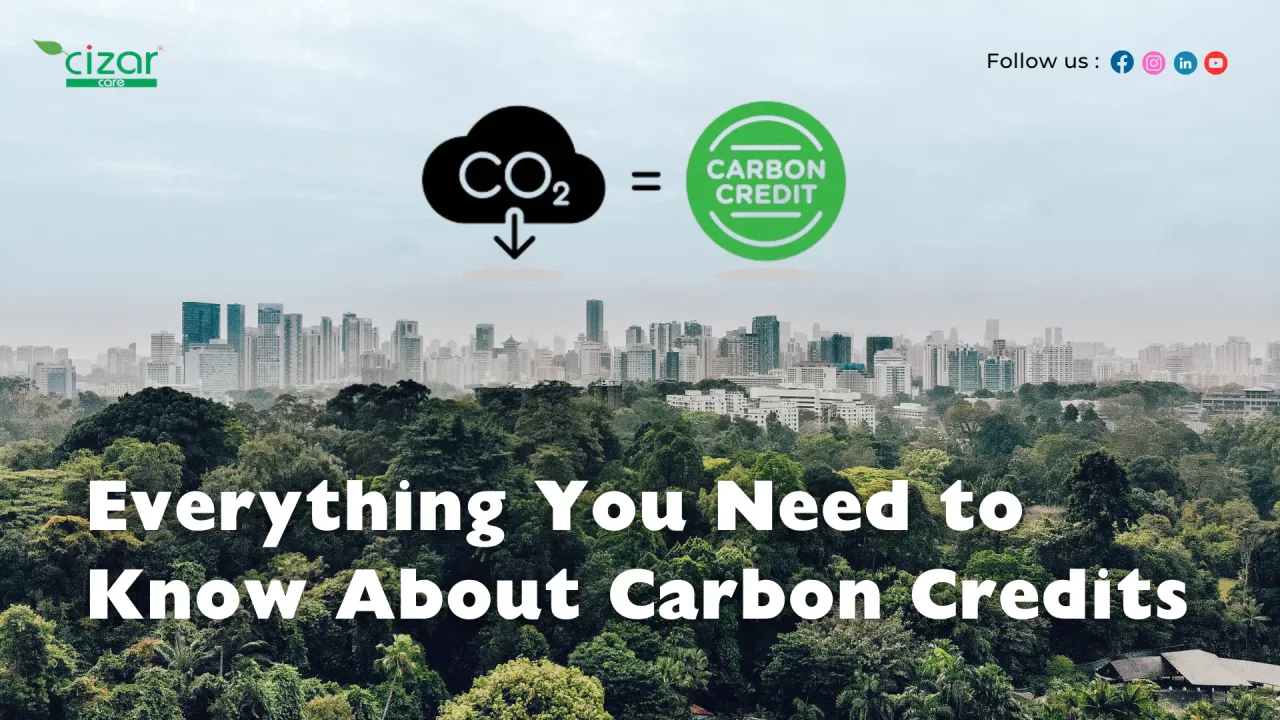Carbon Credit
Everything You Need to Know About Carbon Credits
In the fight against climate change, carbon credits have emerged as a vital tool. But what exactly are carbon credits, and why are they so important? Whether you're an individual looking to reduce your carbon footprint or a corporation aiming to achieve sustainability goals, this introductory guide will provide you with a foundational understanding of carbon credits.

What Are Carbon Credits?
At its core, a carbon credit represents the right to emit one tonne of carbon dioxide (CO2) or the equivalent amount of other greenhouse gases (GHGs). Carbon credits are part of a market-based system that rewards pollution reduction. By creating financial incentives, it encourages businesses and organizations to adopt greener practices.
Why Are Carbon Credits Important?
Carbon credits play a crucial role in the fight against climate change by:
- Reducing Greenhouse Gases: By capping the total amount of emissions, carbon credits help lower overall GHG levels.
- Promoting Sustainable Practices: They encourage companies and individuals to adopt greener practices.
- Supporting Global Goals: Aligning with international agreements like the Paris Agreement, they help countries meet their climate targets.
History and Evolution
The concept of carbon credits originated from the Kyoto Protocol in 1997, where countries agreed to reduce their GHG emissions. Over time, the system has evolved, especially with the Paris Agreement in 2015, which has further bolstered the importance of carbon credits in global climate strategies.
How Do Carbon Credits Work?
The mechanism behind carbon credits involves a "cap-and-trade" system:
- Cap: Governments set a limit on the total amount of emissions allowed.
- Trade: Companies that reduce their emissions can sell their excess credits to those that need them. This creates a financial incentive to cut emissions.
Carbon credits are a powerful mechanism to combat climate change, offering both environmental and economic benefits. By understanding how they work and their importance, individuals and corporations can make informed decisions to reduce their carbon footprints.
Types of Carbon Credits
Carbon credits can be generated from various projects that reduce greenhouse gas emissions or sequester carbon dioxide. Here are some common types:
- Renewable Energy Credits (RECs): Generated from renewable energy sources like solar, wind, and hydro power.
- Forestry Credits: Derived from reforestation, afforestation, and improved forest management projects.
- Agricultural Credits: Generated through practices that reduce emissions from agriculture, such as sustainable land management and reduced deforestation.
- Industrial Process Credits: Created by projects that reduce emissions from industrial processes, such as energy efficiency improvements or the use of cleaner technologies.
- Carbon Capture and Storage (CCS) Credits: Generated by projects that capture and store carbon dioxide emissions from industrial facilities.
Key Players in the Carbon Market
The carbon market involves a variety of stakeholders, including:
- Governments: Governments play a crucial role in establishing carbon markets and setting emission reduction targets.
- Businesses: Companies can purchase carbon credits to offset their emissions or generate credits through their own sustainability initiatives.
- NGOs and Environmental Organizations: These organizations often develop and manage carbon credit projects and promote awareness about carbon markets.
- Carbon Credit Exchanges: Platforms where carbon credits are traded, facilitating transactions between buyers and sellers.
- Verifiers and Registries: Independent organizations that verify the authenticity and quality of carbon credits.

Emerging Trends in Carbon Markets
The carbon market is constantly evolving, with several emerging trends shaping its future:
- Increased focus on quality: There is a growing demand for high-quality carbon credits that deliver genuine environmental benefits.
- Expansion of carbon markets: New carbon markets are emerging in various regions, providing more opportunities for businesses and individuals to participate.
- Integration with other sustainability initiatives: Carbon credits are increasingly being integrated with other sustainability goals, such as biodiversity conservation and social equity.
- Technological advancements: Innovations in blockchain and other technologies are improving the transparency and efficiency of carbon markets.

